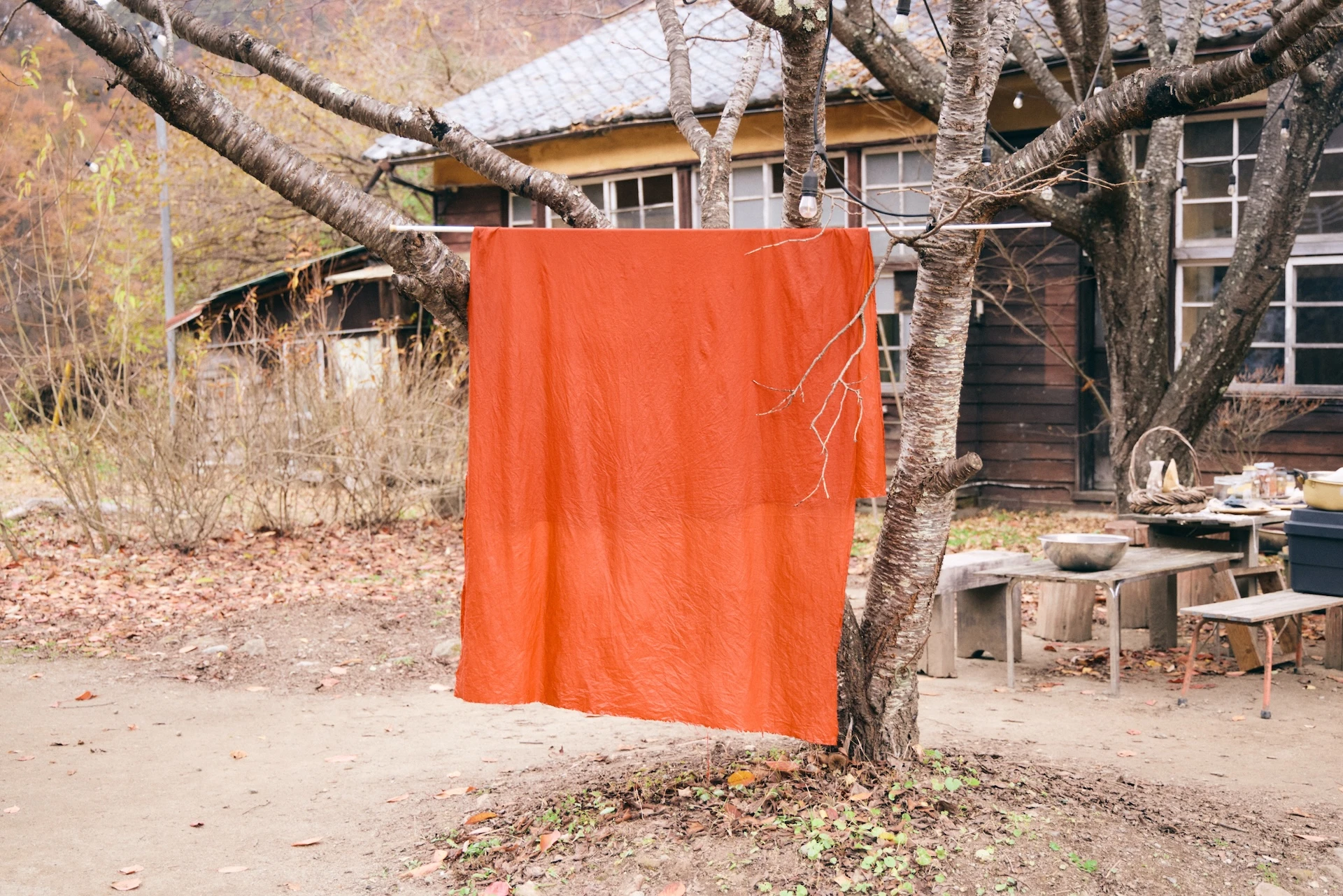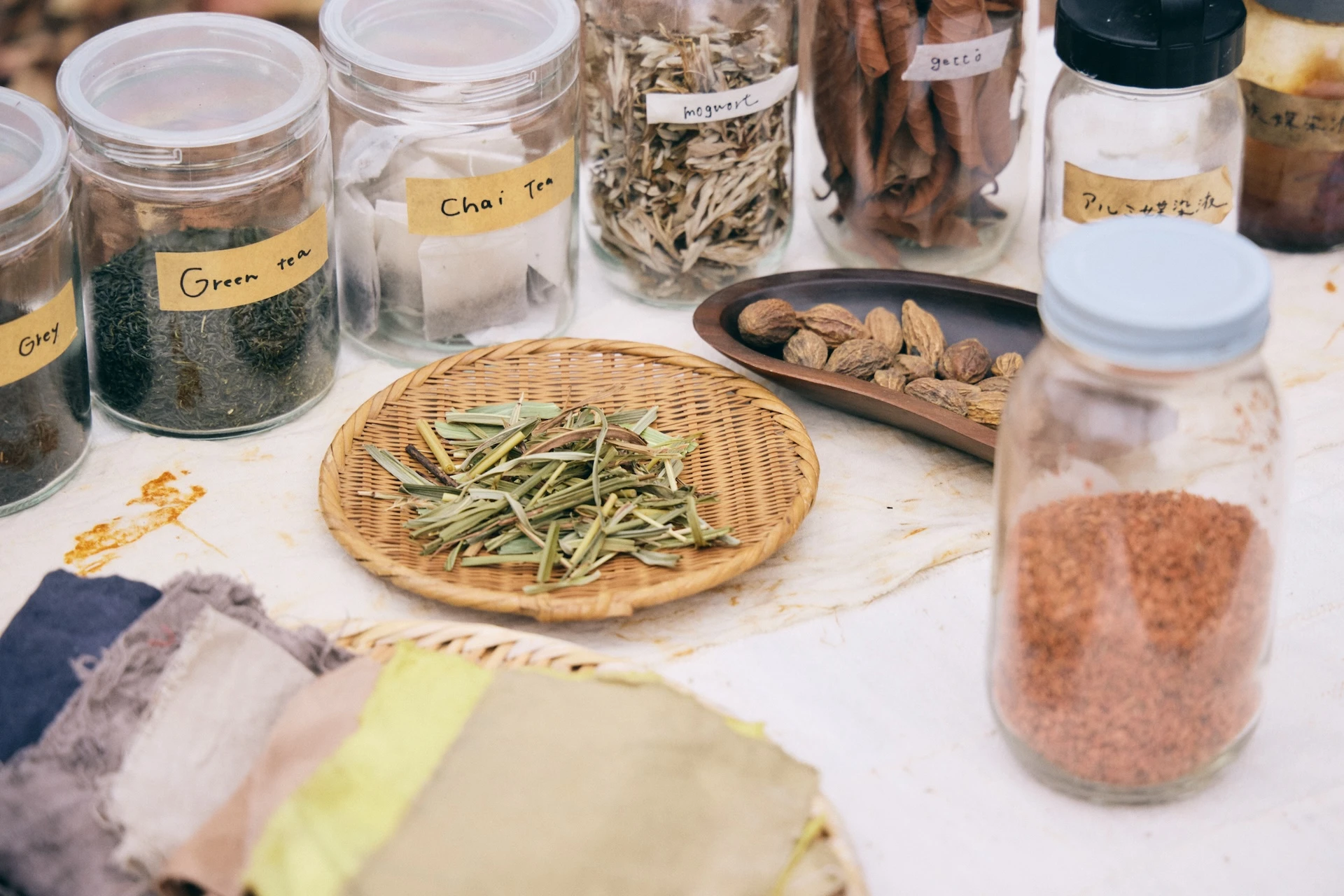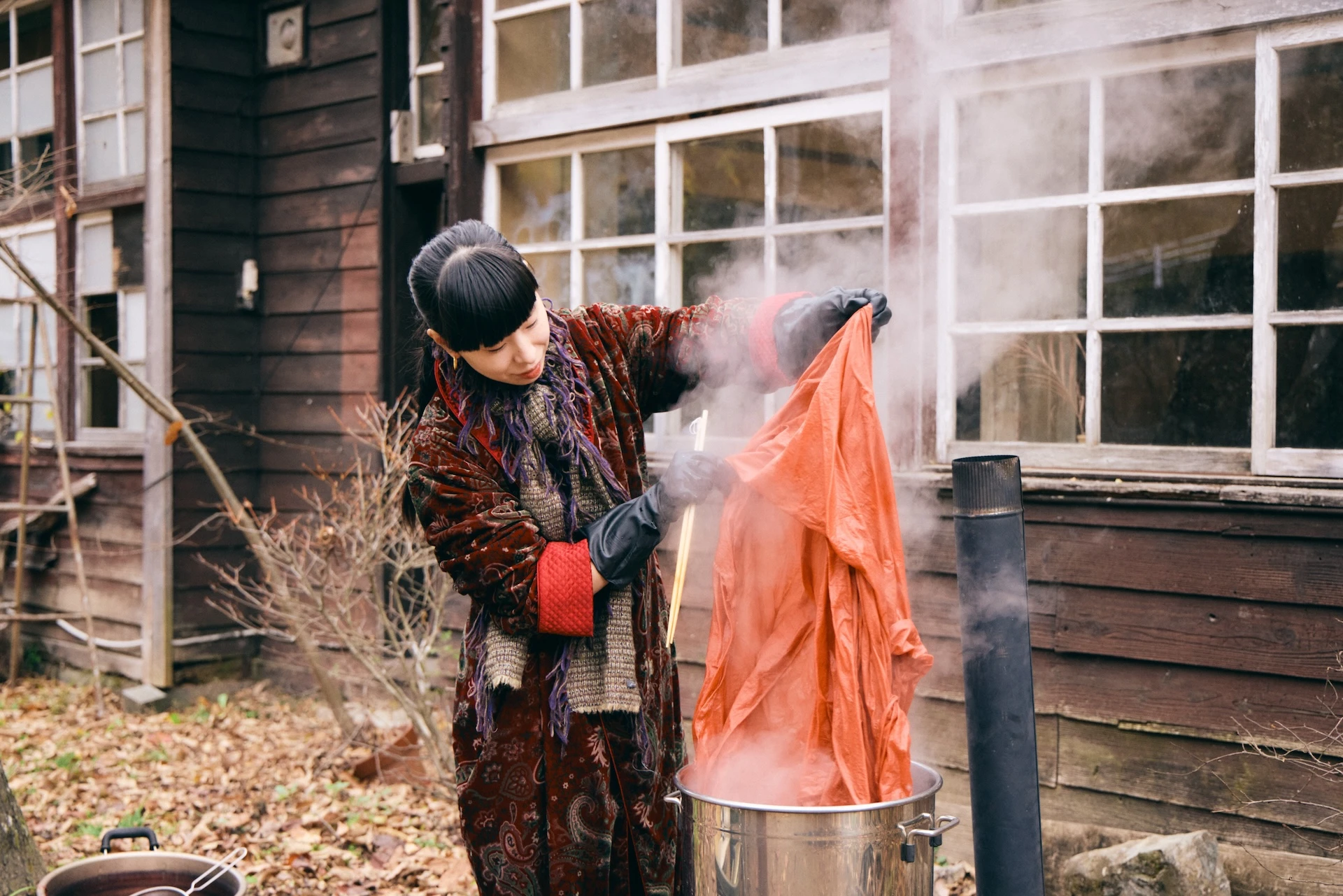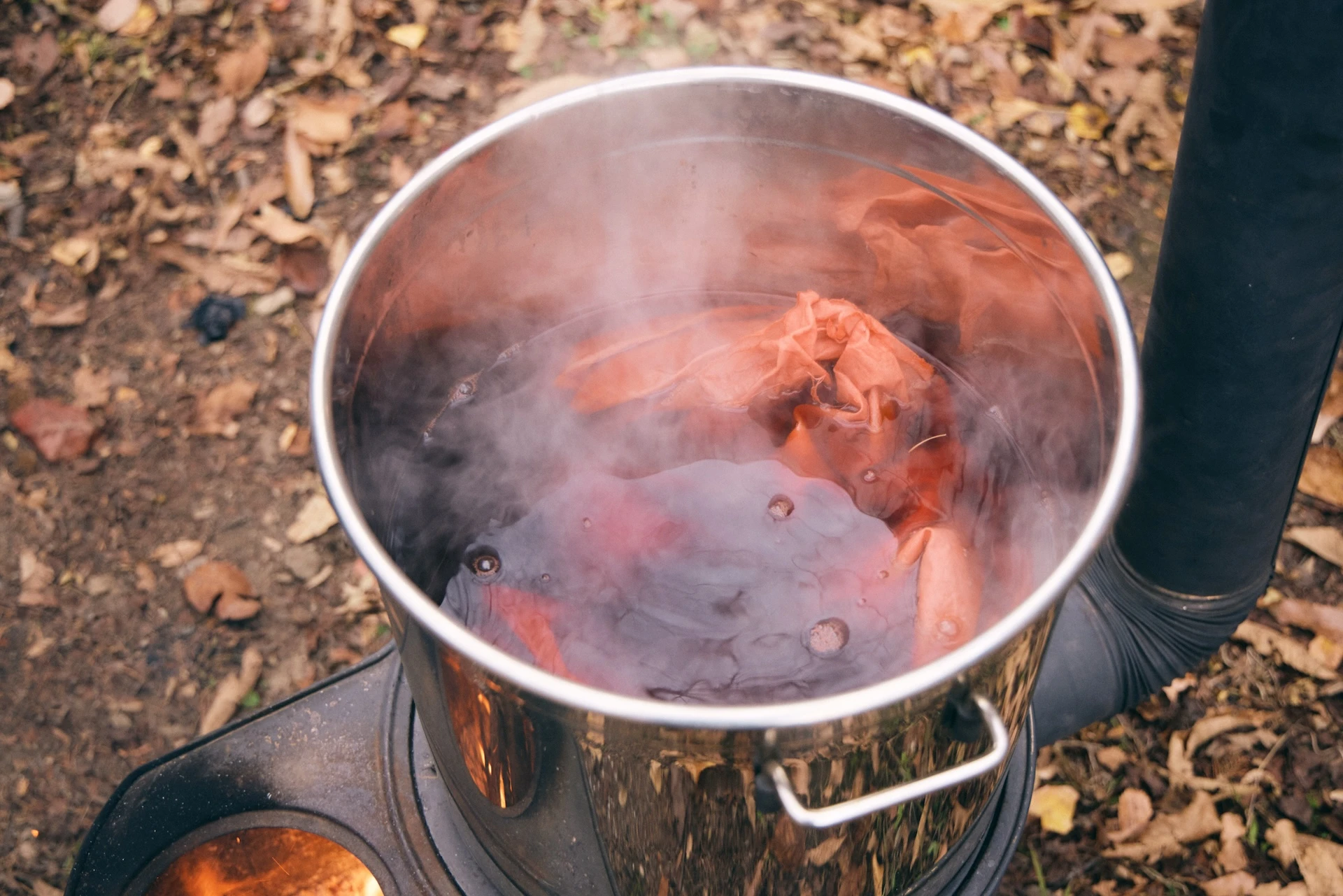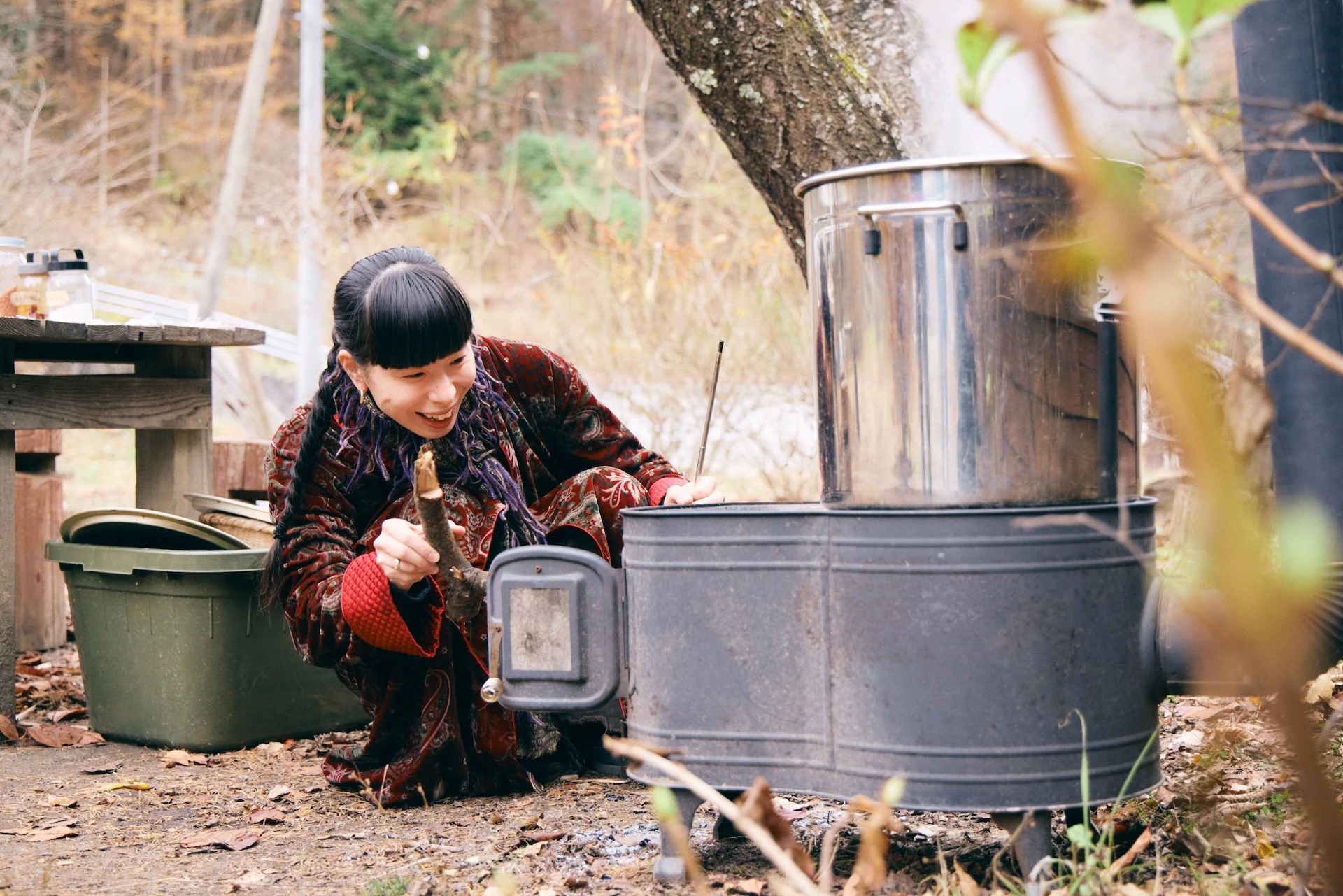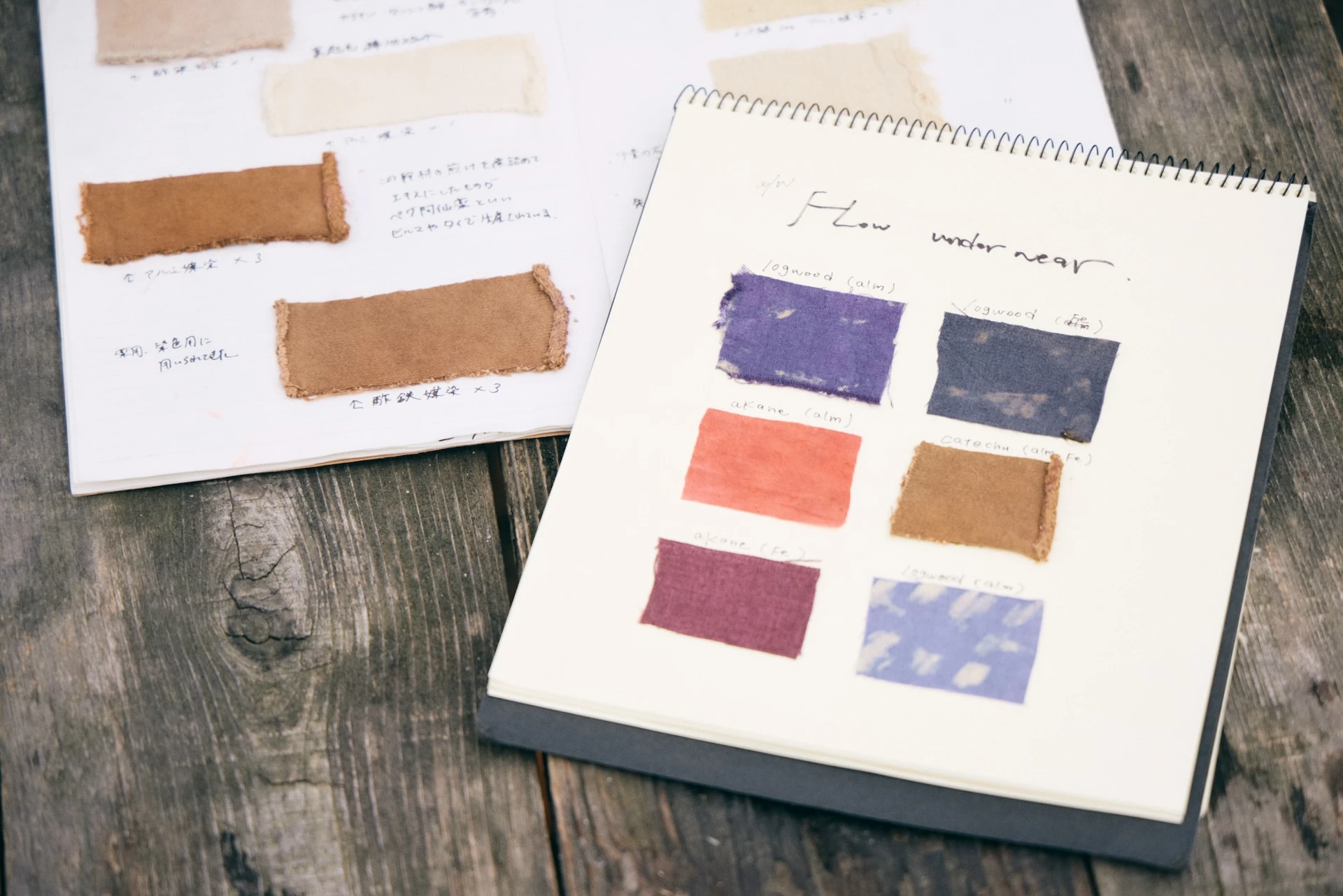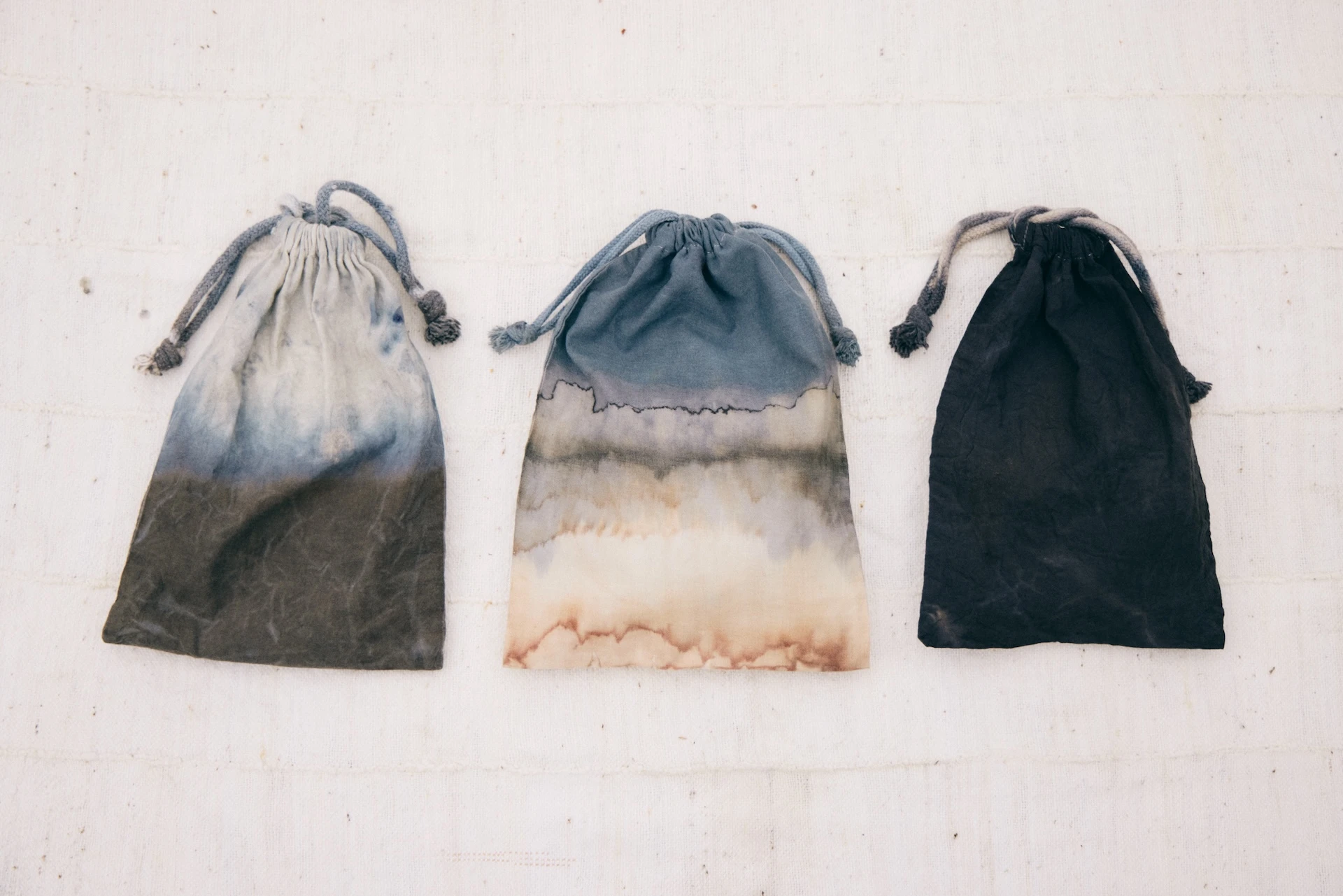JUNKAN Museum
“JUNKAN”: A Creator’s Vision.
Exploring “JUNKAN” through Varied Perspectives, Ideas, and Expressions.
Plant Dyeing Artist
Misaki Ushiozu
6/11
The Cycle of the Five Elements Unveiled Through Plant Dyeing
I first encountered plant dyeing while working at a greengrocer in Tokyo. One day, I was given leftover vegetables, and I instinctively thought, “These could be used as dye.” I decided to experiment, and that was the beginning. I found the process fascinating, and soon, after work, I would spend every evening in my kitchen boiling vegetable scraps and dyeing fabric.
Before that, I had studied fashion in university and later launched a brand specializing in ballet practice wear and leotards. However, I eventually grew weary of the relentless cycle of fashion collections. What I realized while dyeing fabric with plants was a feeling that stood in stark contrast to the commercial world of “creating to sell.” Now, I create simply for the sake of creating, driven by a pure and simple motivation.
Around the same time I started dyeing, I came across the ancient Chinese philosophy of the Five Elements (Wu Xing). This philosophy describes how five energies—fire, water, wood, metal, and earth—interact and circulate to shape all things in the universe. When I first learned about it, I immediately thought, “This is exactly what plant dyeing is!” Plants, which grow from the earth, and materials like wood are placed in water, then heated with fire. The color is fixed using alum, which comes from metal. When you follow the process step by step, it becomes clear that these five elements are indispensable to dyeing and are constantly interwoven.
Thinking about plant dyeing as a practice that relies on fundamental elements like fire and water made perfect sense to me. It felt right. Rather than sourcing materials from afar, I wanted to create using what was around me—an approach deeply connected to nature. This is also why I moved from Tokyo to a more rural, nature-rich area, where I could harvest wild plants for dyes. We live in a time where anything can be obtained easily, yet I often wonder what would happen if infrastructure or supplies were suddenly cut off due to a disaster. In some ways, my approach to dyeing might be a quiet form of resistance to the modern world.
Living in the mountains, I witness the cycles of nature every day. Sometimes, I come across the remains of an animal on the road, only to find that by the next day, it has disappeared. Other animals feed on it, and the rain washes away the traces. The natural cycle is always present—constantly in motion. It made me realize that everything eventually becomes part of this cycle, including my own actions and creative work. It’s not about making a conscious effort to contribute to the cycle; rather, I have simply become part of it without even realizing it.
Studying colors and researching dyeing techniques has led to fascinating discoveries. For example, although our planet is overwhelmingly covered in green and blue, there is no natural dye that can directly extract pure green or blue. The sky and ocean appear blue, but when you try to grasp them, they are colorless—blue, in essence, does not physically exist. Plants are green when they are alive, but the moment they are uprooted, the color begins to fade. Green is the color of life captured in a fleeting moment. Even the term midorigo (literally “green child”) refers to a newborn baby, a symbolic representation of this idea. As time passes, the baby’s cheeks turn red, and it is then called akago (“red child”). These discoveries excite me—the way small curiosities can lead to profound insights about nature. It feels like peering into a vast world through a tiny hole, or dissecting the essence of the Earth through the simple act of dyeing.
Special Thanks to:0site
Photo:Manaya Sakaguchi
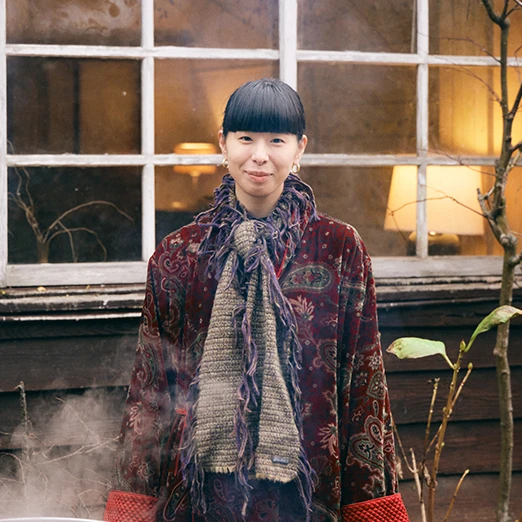
Born in Wajima City, Ishikawa Prefecture, she graduated from Bunka Gakuen University’s Film and Stage Costume Design Course. While working at a greengrocer in Tokyo, she became interested in plant dyeing after seeing discarded vegetables, leading her to study the craft on her own. In 2021, she moved to Sutamacho, Hokuto City, Yamanashi Prefecture, to pursue plant dyeing more seriously. She also runs 0site, a renovated former elementary school turned campsite, with her husband, where she is in charge of food preparation. In addition, she occasionally hosts plant dyeing workshops. She is also a mother of one.
Let’s Share!
Do you want to be a part of “JUNKAN” ?
Share your Monthly JP pavilion,
and circulate your thoughts.
Related Artist
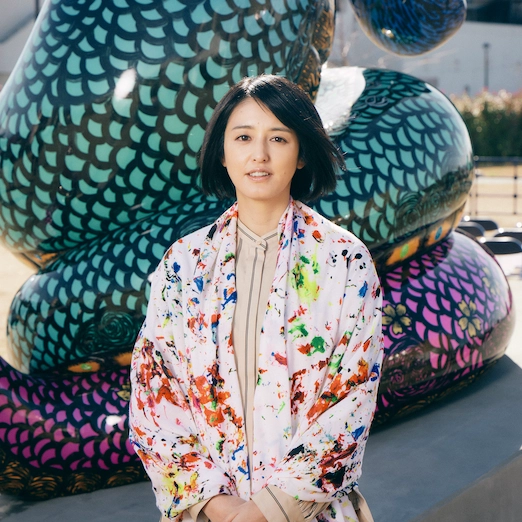
1/11
Artist
Miwa Komatsu

2/11
Artist/Plant Director/Doctor (Agriculture)
Mikiko Kamada
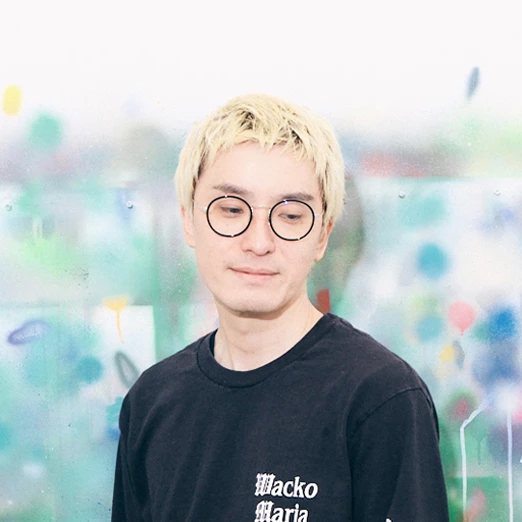
3/11
Artist
Hiroki Niimi

4/11
Photographer
Shinichiro Shiraishi
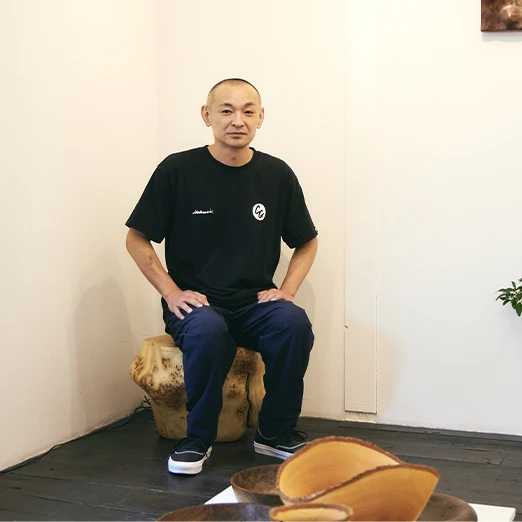
5/11
Artist
Shoji Morinaga
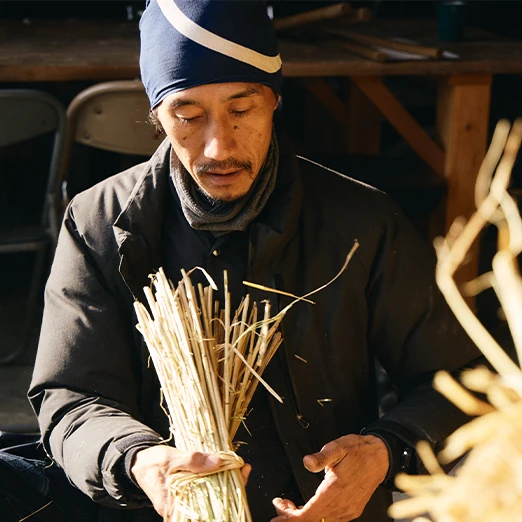
7/11
Thatch Craftsman
Ikuya Sagara
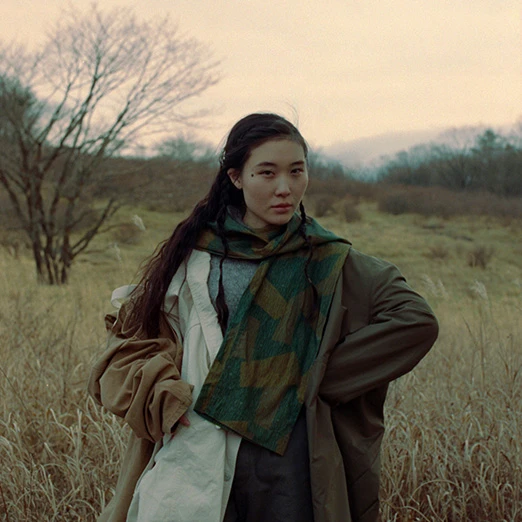
8/11
Artist
Moeko Yamazaki
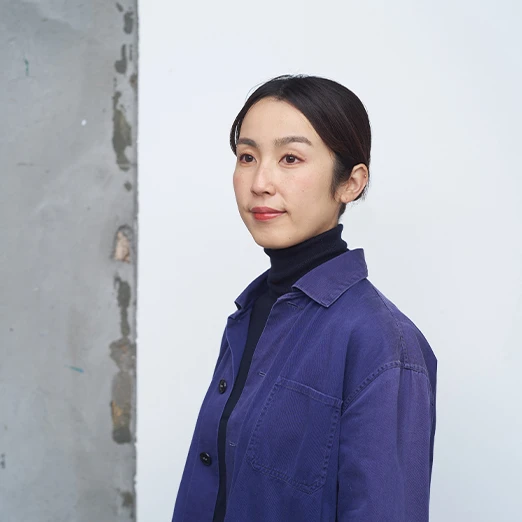
9/11
Designer / Artist
Sae Honda
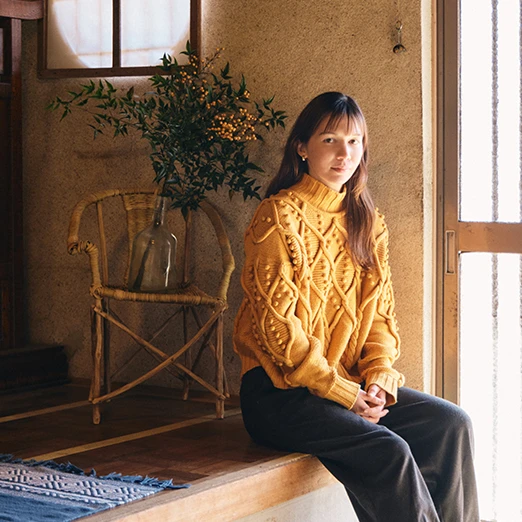
10/11
Contemporary Artist
Hanna Saito
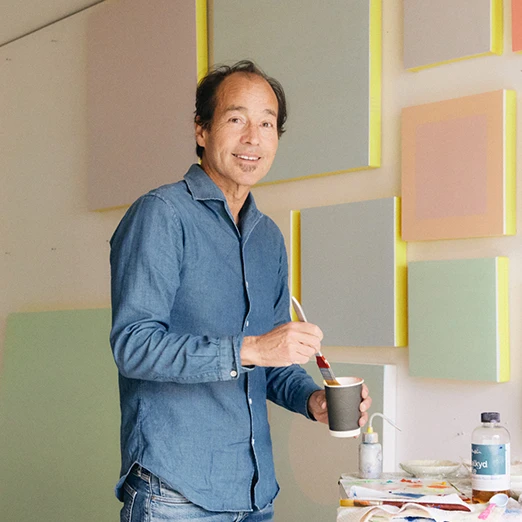
11/11
Abstract Painter
Shingo Francis
